The tomb belonged to a formerly enslaved man named Marcus Venerius Secundio.
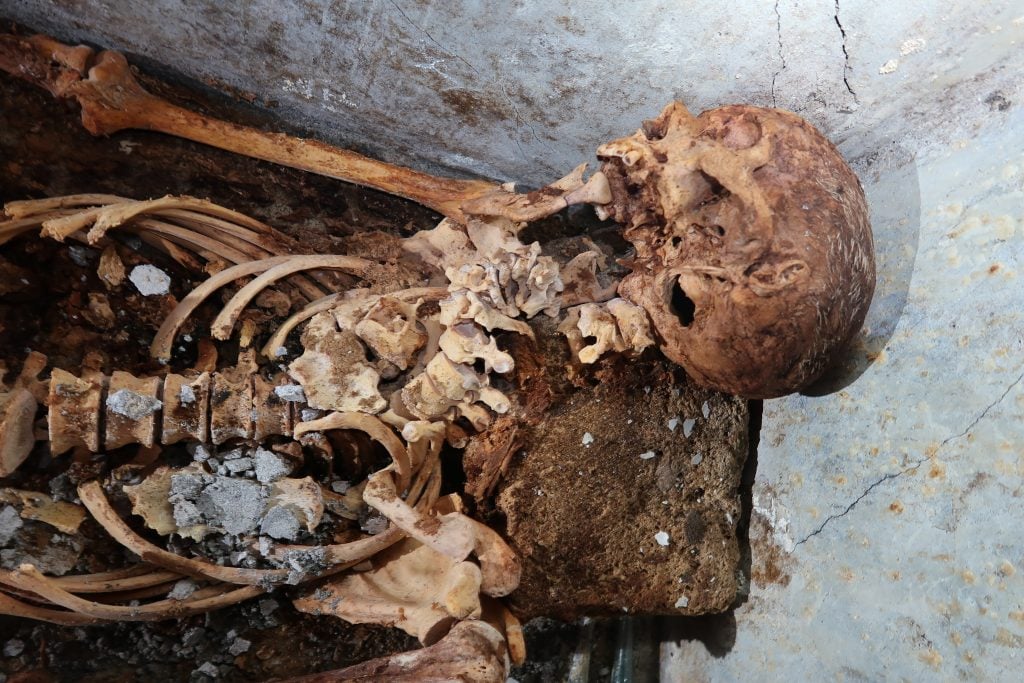
Archaeologists have discovered a tomb in Pompeii containing one of the site’s best-preserved skeletons to date—and the partially mummified remains offer fascinating insight into the previously unknown role that Greek culture played in the ancient Roman city.
An inscription on the dead man’s tomb identifies him as Marcus Venerius Secundio and appears to indicate that he helped stage performances of Greek plays. It says the deceased “gave Greek and Latin ludi,” or performances.
“It is the first clear evidence of performances at Pompeii in the Greek language,” Gabriel Zuchtriegel, director of the Archaeological Park of Pompeii, said in a statement. “That performances in Greek were organized is evidence of the lively and open cultural climate which characterized ancient Pompeii.”
The partially mummified body still sports white hair and part of an ear, as well as surviving fabric fragments. The tomb was essentially a hermetically sealed room, helping preserve the body over the centuries.
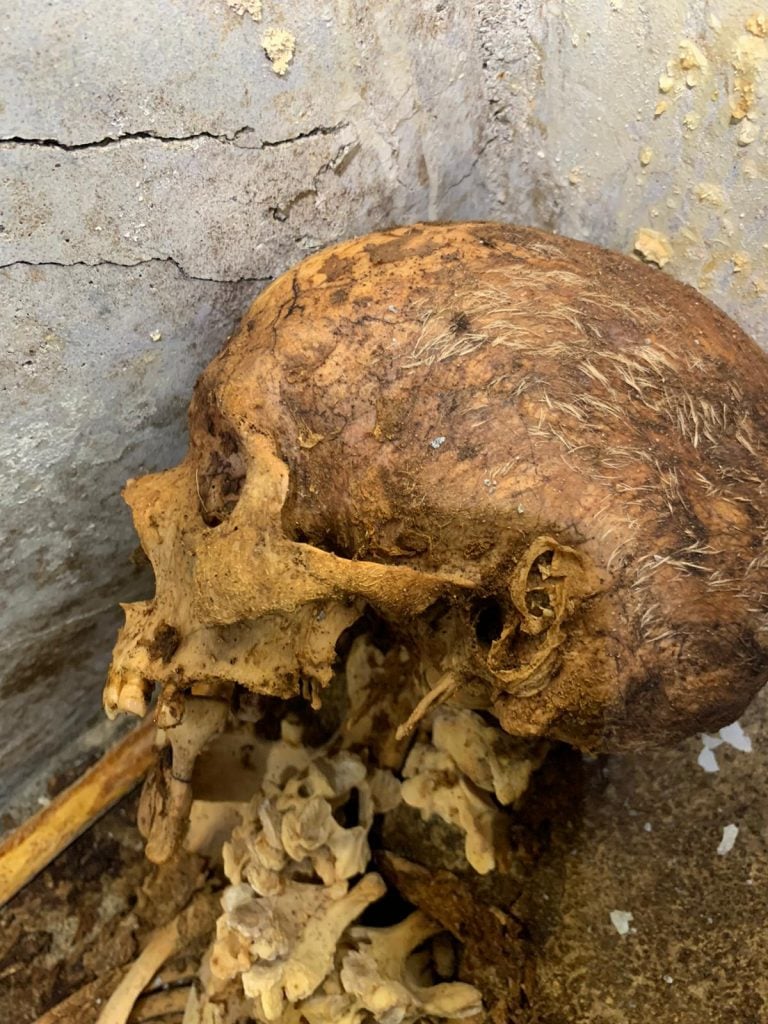
Hair and part of the ear can still be seen on the skull of Marcus Venerius Secundio, the most well-preserved burial discovered at Pompeii to date. Photo courtesy of the Archaeological Park of Pompeii.
Wax tablet records kept by Pompeian banker Cecilius Giocondu note that Secundio was enslaved and served in the Temple of Venus. But he rose through the social ranks once he was freed, joining the Augustales priesthood, an imperial cult. Secundio died around the age of 60, buried in a large and impressive tomb befitting his improved social status.
Found in the necropolis of Porta Sarno, a portion of the city not currently open to the public, the tomb dates to the final decades before the 79 A.D. eruption of Mount Vesuvius that destroyed Pompeii. It’s an unusual discovery because adult bodies were usually cremated in ancient Rome. The tomb also contains two cinerary urns, one of which is made of blue glass with a marke “Novia Amabilis,” which means “kind wife.”
Other recent discoveries in Pompeii include a thermopolium, or ancient fast food restaurant that just opened to the public, and amulets that may have belonged to a female sorcerer.
See more photos from the discovery below.
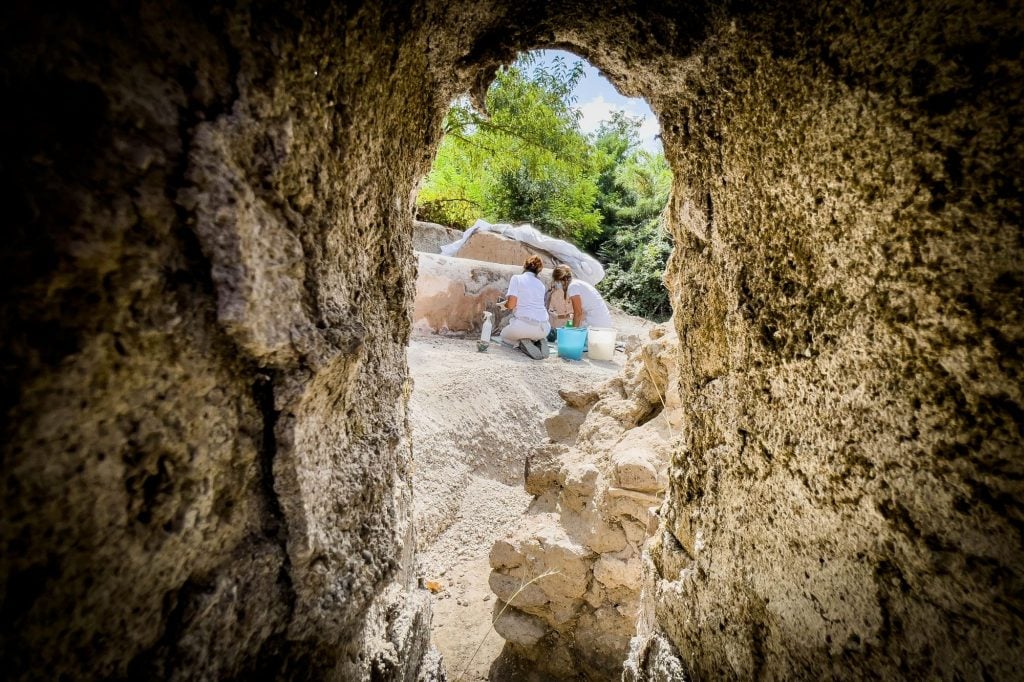
Archeologists excavate the tomb at Porta Sarno in the archeological park of Pompeii. Photo by Cesare Abbate, courtesy of the Archaeological Park of Pompeii.
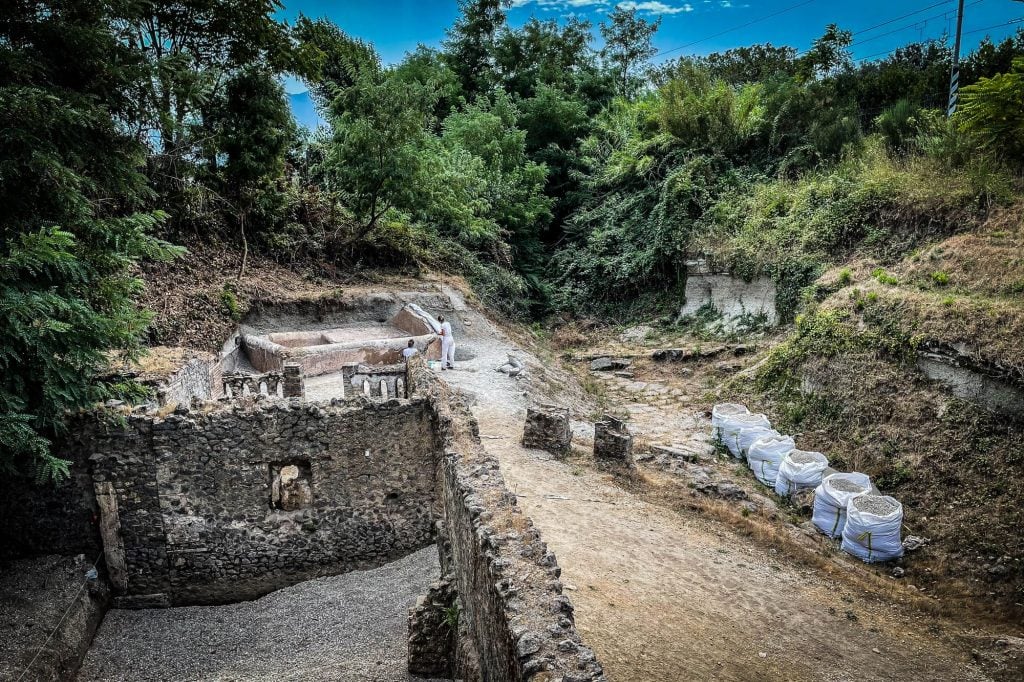
The site of the newly discovered tomb in Pompeii. Photo courtesy of the Archaeological Park of Pompeii.
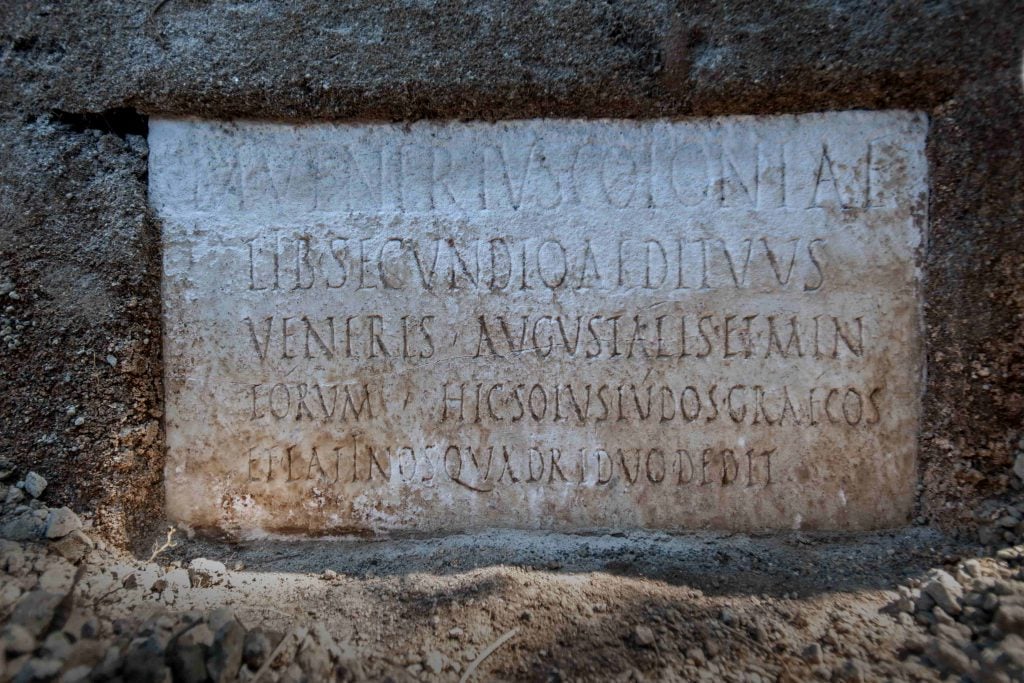
The tomb’s inscription to Marcus Venerius Secundio. Photo courtesy of the Archaeological Park of Pompeii.
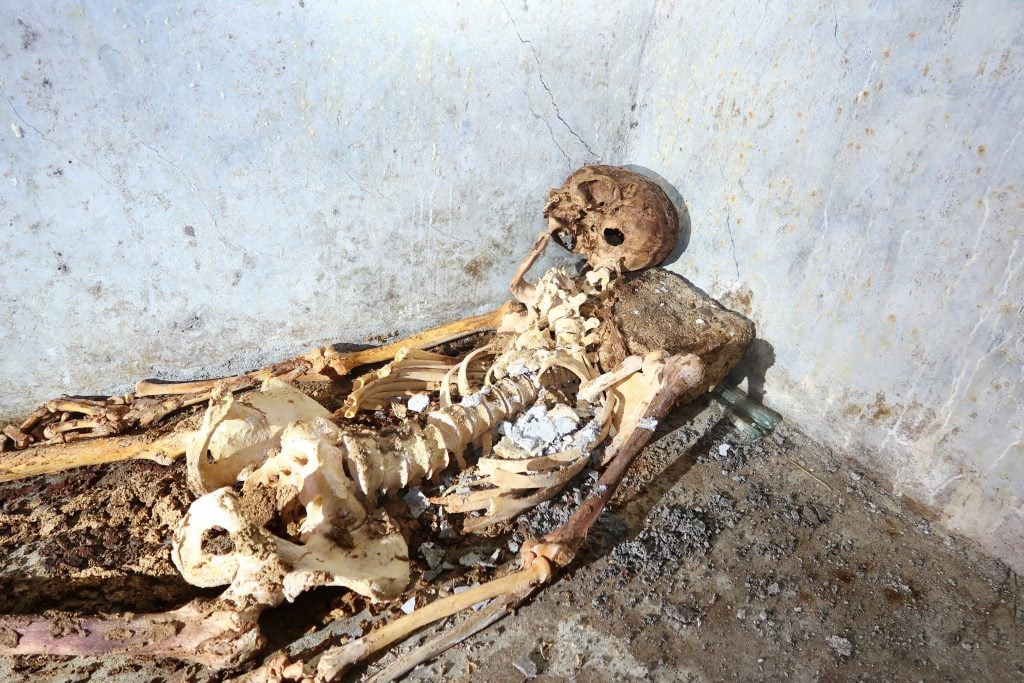
The remains of Marcus Venerius Secundio were preserved in a sealed chamber in a Pompeii cemetery. Though the body is nearly 2,000 years old, close-cropped hair and an ear are still visible on the skull. Photo courtesy of the Archaeological Park of Pompeii/University of Valencia.
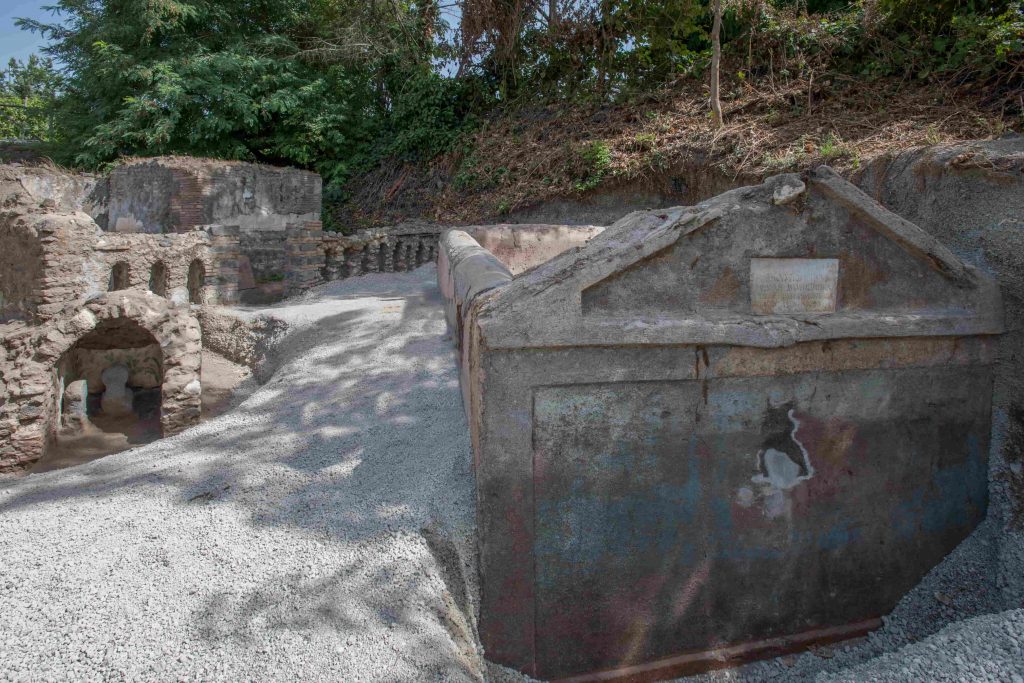
The masonry tomb of Marcus Venerius Secundio in the Porta Sarno Necrtopolis. Faint traces of blue and green paint still can be seen on the outer walls.Photo courtesy of the Archaeological Park of Pompeii.

An archaeologist with the remains of Marcus Venerius Secundio in Pompeii. Photo courtesy of the Archaeological Park of Pompeii.
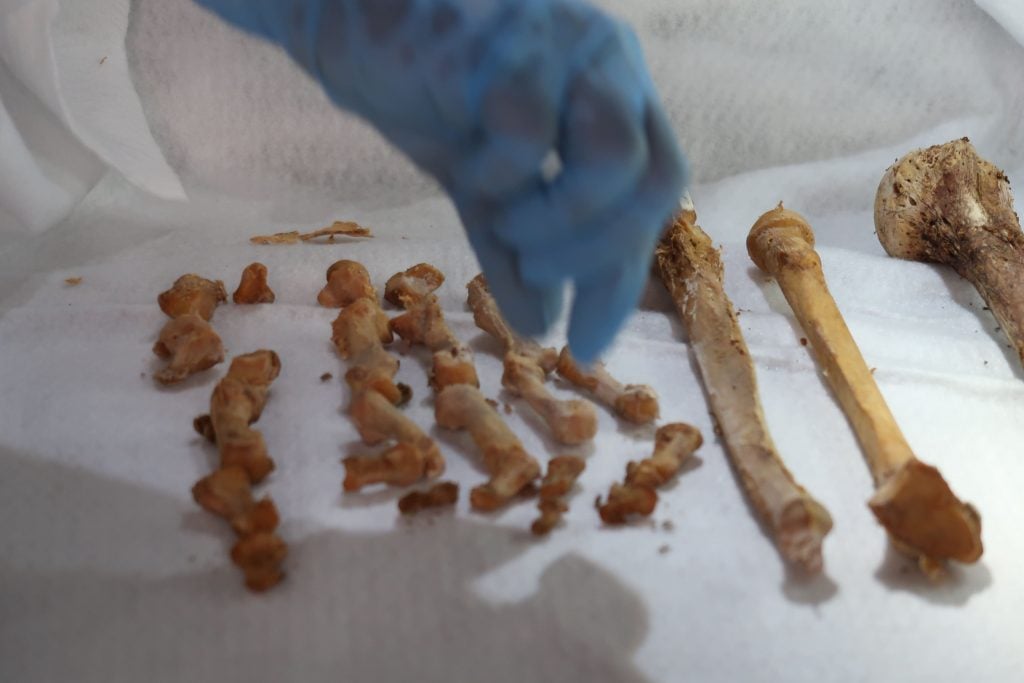
Examining the remains of Marcus Venerius Secundio. Photo courtesy of the Archaeological Park of Pompeii.

A blue glass urn found in the tomb of Marcus Venerius Secundio next to a marker reading “Novia Amabilis.” Photo courtesy of the Archaeological Park of Pompeii/University of Valencia.
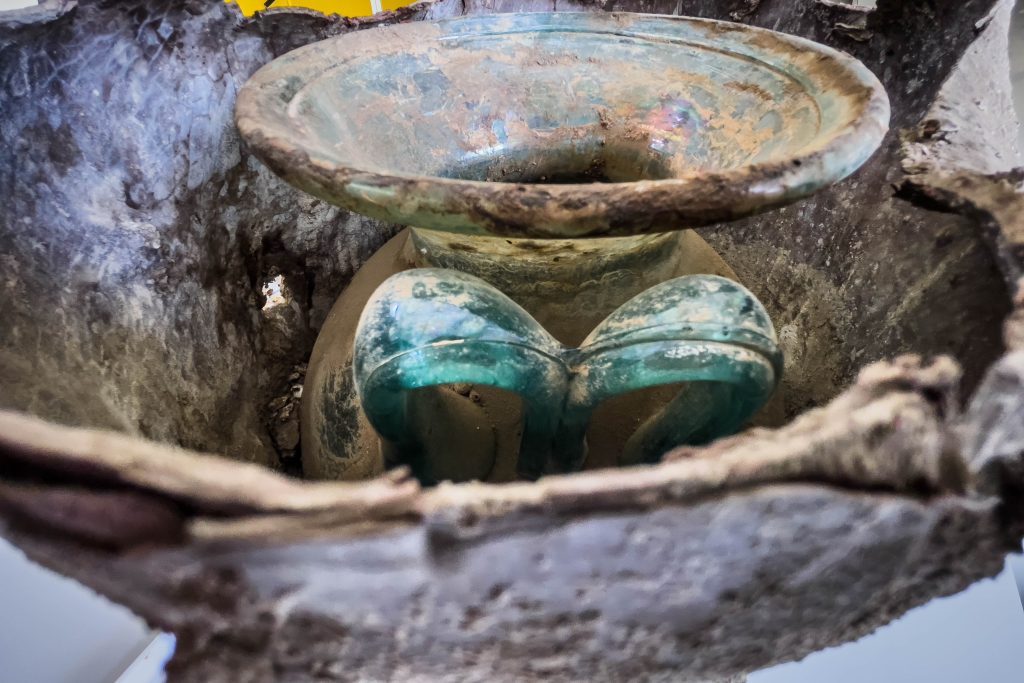
A blue glass urn found in the tomb of Marcus Venerius Secundio marked “Novia Amabilis.” Photo courtesy of the Archaeological Park of Pompeii/University of Valencia.

The remains of Marcus Venerius Secundio in Pompeii. Photo courtesy of the Archaeological Park of Pompeii.

Detail showing white hair on the skull of Marcus Venerius Secundio. Photo courtesy of the Archaeological Park of Pompeii.
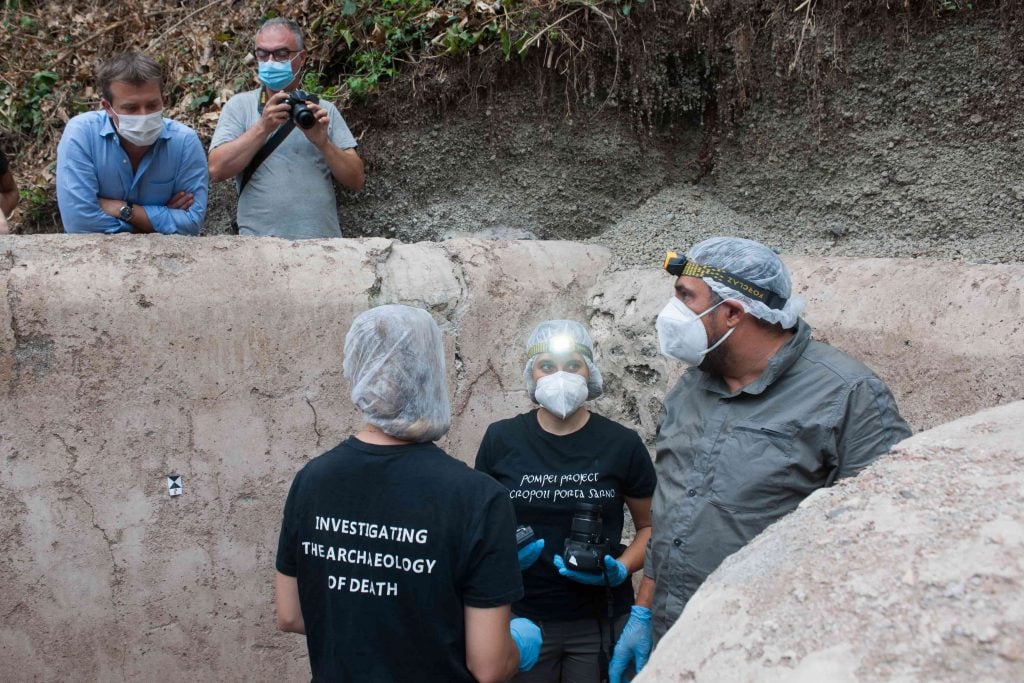
Excavations at the tomb of Marcus Venerius Secundio in the Porta Sarno Necrtopolis. Photo courtesy of the Archaeological Park of Pompeii.
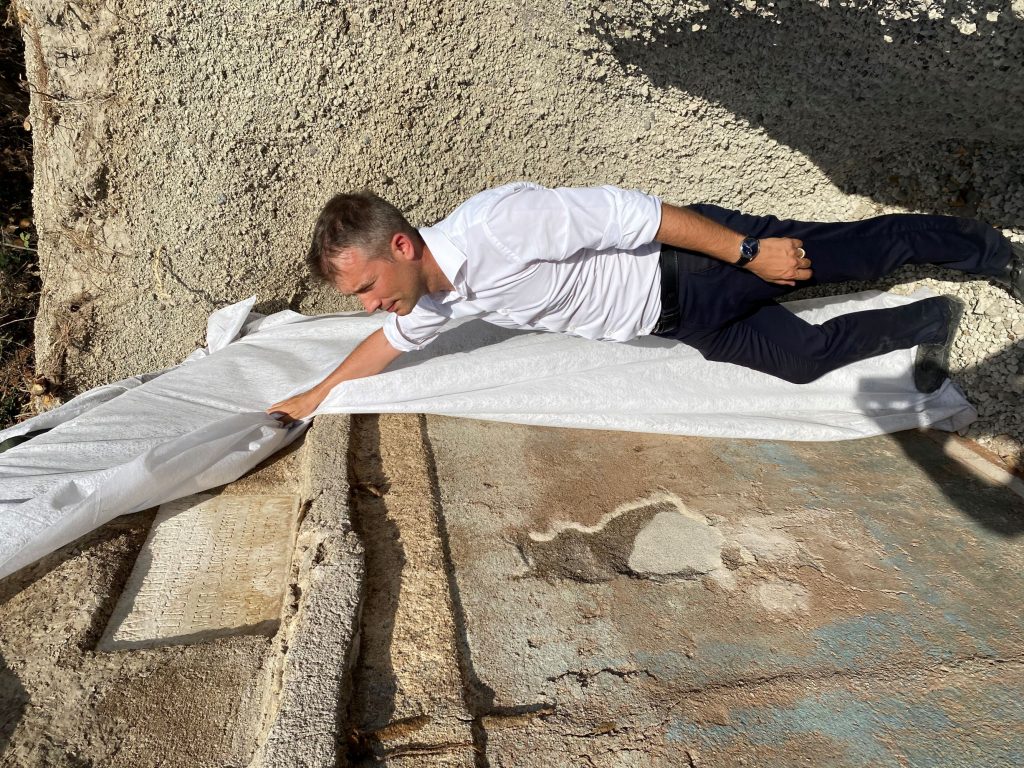
Excavations at the tomb of Marcus Venerius Secundio in the Porta Sarno Necrtopolis. Photo courtesy of the Archaeological Park of Pompeii.
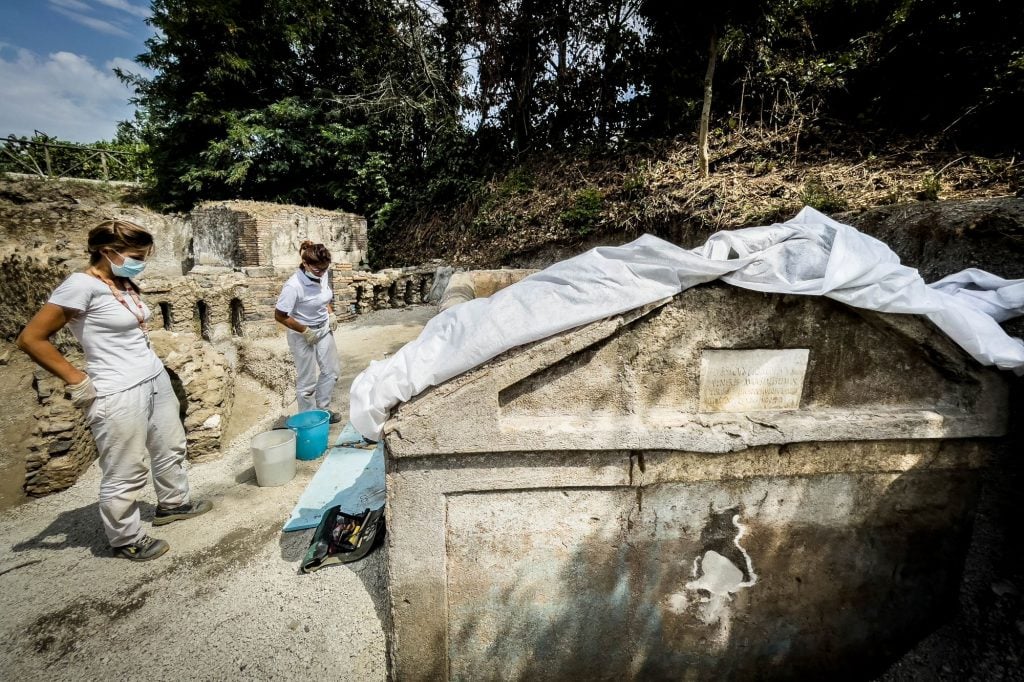
Archaeologists excavate the tomb at Porta Sarno in the archeological park of Pompeii. Photo by Cesare Abbate, courtesy of the Archaeological Park of Pompeii.
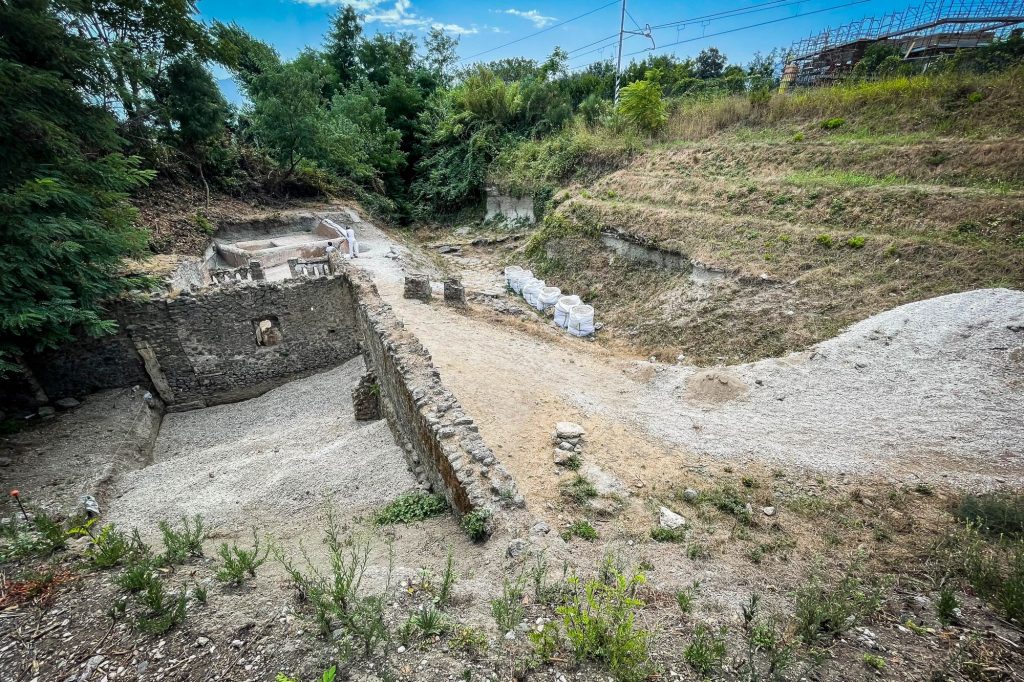
The site of the newly discovered tomb in Pompeii. Photo courtesy of the Archaeological Park of Pompeii.

A marker reading “Novia Amabilis” found in the tomb of Marcus Venerius Secundio. Photo courtesy of the Archaeological Park of Pompeii.
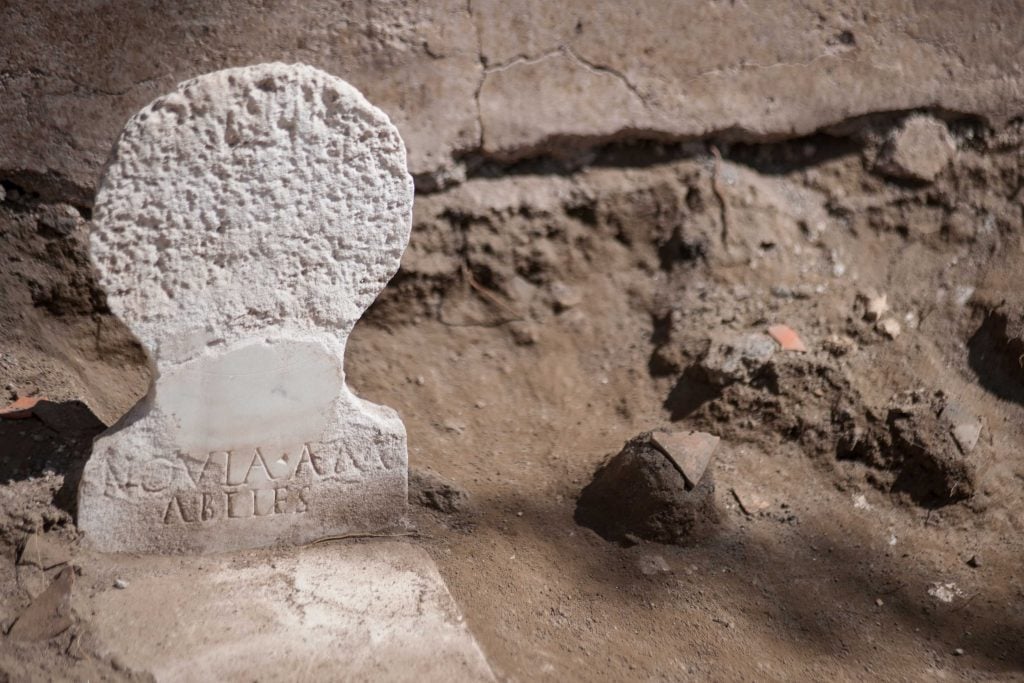
A marker reading “Novia Amabilis” found in the tomb of Marcus Venerius Secundio. Photo courtesy of the Archaeological Park of Pompeii.





